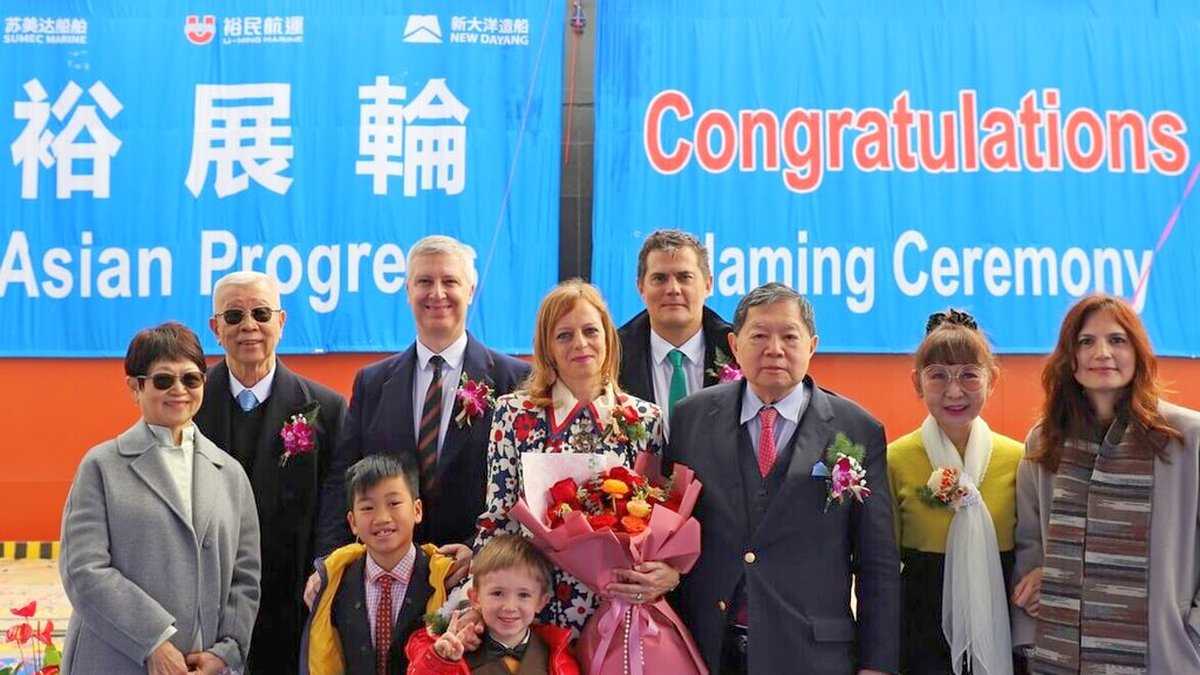Shipping ─ sail Taiwan to the world
U-Ming Marine Transport Corporation (U-Ming), formerly known as Yue-Ming Transportation Co., was established in 1984. The commencement of U-Ming’s operations pushed Far Eastern Group (FEG)’s reach from land to sea. Yue-Ming Transportation originally transported cement using trucks; in 1980, it modified its business model to provide marine transportation of cement. It contracted China Ship Building Co. to build Asia Cement No.1, which transported cement to various Taiwanese ports, creating a new marine shipping model. In 1984, the company added a second self-loading/unloading maritime carrier. Since then, U-Ming has been responsible for marine transportation operations only and shifted from transporting cement to bulk raw materials.

U-Ming Panamax vessel – Cemtex Prudence
In these 25 years, U-Ming has become the largest bulk carrier in Taiwan, possessing various vessel types such as Capesize carriers, Panamax carriers, Handy carriers, and Very Large Crude Carrier (VLCC) vessels. Taiwan’s location makes it a crucial shipping point in Asia for marine transportation. By becoming a major competitor in bulk carriers, U-Ming has assisted Taiwan’s transformation into a major shipping hub in Asia and raised the bar for quality marine transportation. “Marine transportation is the most cost-effective shipping method; the need will not disappear,” says U-Ming President Choo-Kiat Ong.
U-Ming Marine was listed in Forbes Asia’s “200 Best under a Billion” in the Asia Pacific region in 2005. In 2009, CommonWealth magazine awarded U-Ming Marine sixth place in the top-500 service industry net profit list, and third in profitability. Under CommonWealth magazine’s Fortune 1000 Companies in cross-straits category, U-Ming is listed 50th, and was awarded second place for “Outstanding Financial Performance” in Marine Money International.
Rallying against all odds, U-Ming has thrived in a perilous economic environment, transitioning from a defensive to an offensive business strategy over the years. U-Ming has foreseen the expansion of public construction projects in many countries, as well as the rising need for bulk transportation. As mainland China increases its imports of iron ore and coal, and India, Eastern Europe and South America’s economies emerge with increasingly liberal market practices, marine transportation is becoming more important. U-Ming has been enhancing its competitiveness through mergers, replacement of old vessels and fleet expansion.
How does one deal with these moving targets? How does one adjust and adapt to the uncertainties prevalent in capital raising and shipping costs? It takes a leader with a wealth of experience to make a good judgment call. “The flexibility and agility of our business model have been crucial factors in U-Ming’s success,” says Mr. Choo-Kiat Ong.
There was another opportunity for growth when Taiwan’s government signed the “Agreement on Cross-Strait Sea Transportation” with mainland China in 2009. This opened up the market for shipping vessels to travel between China, Hong Kong, and Taiwan. In 2009 U-Ming was the only company that was approved to have nine shipping vessels ship directly to China for a three-year time frame, giving the company a tremendous advantage in cross-strait business development. In the future, U-Ming is working towards modernizing a high-quality fleet for a bright future that will outshine competitors in both the cross-strait and international business arenas.
Business and Company
News Type
UN SDG
Share
Download
Source
60th Anniversary Book - Economy





